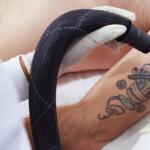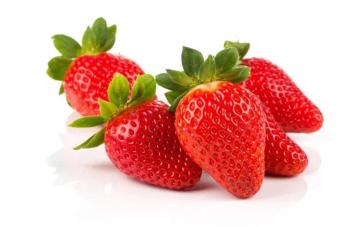Many of our subscribers grow the queen of the garden - the rose. Rose oil has long been used in folk medicine and cosmetology. In addition to the fact that it has a pleasant smell, rose oil has a beneficial, if not healing, effect on our skin. Rubbing the skin with rose oil helps normalize metabolism, smoothes the skin, making the skin firm and elastic. Rose oil is extremely beneficial for the skin and is used to treat burns and some skin diseases.
Rose oil at home - rules.
In order to prepare rose oil at home, you need to follow a few simple rules.
For example, you should collect roses to make oil only at dawn, preferably before sunrise. This time is due to the fact that the maximum amount of essential oil is concentrated on the not yet heated rose petals.
The optimal “season” for picking roses is within 2-4 days after the bud opens. So the flower has not yet had time to “use up” all the aroma.
And of course, in any case, it is better to choose roses with a strong scent, bright red shades.
How to make rose oil?
To make oil you will need a base. In principle, it can be any oil of vegetable origin. Cosmetologists recommend giving preference to olive oil because of its beneficial effects on the skin.
The collected roses are separated into individual petals and cleaned (if necessary) of dirt. Well, now let's look at some of the most popular recipes for making rose oil at home.
Homemade rose oil recipes.
Homemade rose oil recipe No. 1.
Two glasses of prepared rose petals are immersed in a liter jar and filled with 200 ml. olive oil. Close the jar tightly and put it in a cool, dark place. Infuse the oil for 15-20 days.
Periodically (every other day) the contents of the jar are mixed. After 20 days, the resulting oil is filtered and stored in the refrigerator. The oil is ready for use.
Recipe for making rose oil No. 2.
Sugar is poured into a liter jar with a layer of 1-1.5 cm. Next, rose petals are lowered into the same jar so that their layer is 5-6 cm. The contents of the jar are pressed tightly. Another layer of sugar 0.5-1 cm thick is poured on top.
Similar to the first recipe, close the jar with a tight lid and put it in a cool, dark room. The mixture should be infused in this way for at least 2 months (optimally 2.5-3 months). During this time, sugar draws out moisture and essential components of the petals.
Before use, the oil is separated from the rose petals. The resulting thick mass is homemade rose oil.
Rose oil recipe No. 3.
Place cotton wool in a thick layer in a liter jar. The cotton wool should occupy almost half the volume of the jar.
The next day at dawn you need to collect fresh roses. Squeeze out the petals from the jar and replace them with fresh ones.
This procedure is repeated several times until the oil receives a persistent aroma of roses. Depending on the variety of roses, it may take 10 to 20 days to prepare the oil. Before using the oil, squeeze out the cotton wool. The finished rose oil is stored in the refrigerator.
Rose oil is used at home for taking a bath or wiping the skin after a shower. It is also effective as a component for anti-cellulite massage.
A bouquet of roses given by your beloved boyfriend can become the basis for anti-aging and anti-cellulite oil. The red and white inflorescences contain components that regenerate the skin, heal burns and awaken desire. But how to extract beneficial substances from the petals at home? Marinate roses in special mixtures.
Main Components
It is recommended to prepare medicinal oil from flowers grown in your own garden. Wild roses and even rosehip inflorescences are also suitable. Store-bought bouquets are often treated with various chemical compounds to keep them fresh longer. But roses bought from grandmothers selling near the metro are suitable for preparing a fragrant extract.
Only the preparation must be fresh. It is recommended to collect the base for the oil early in the morning, preferably before dawn. The petals, covered with dew drops, contain a high concentration of essential substances. Only the tops will be needed; there is no need to cut off the stems.
Roses are soaked in vegetable oils. Preference is given to options with a subtle aroma. Sunflower is not suitable, it is better to take olive or corn. You can use peach or almond, but they can overpower the aroma of roses.
Some recipes use cotton wool. The workpiece is taken out of the packaging in advance and left for several hours on a plate or a clean sheet of paper. The cotton wool should lie in the open air so that the hospital smell disappears from it, otherwise it will mix with the aroma of roses, and you will get something between an antiseptic and an essential oil.
Preparing Ingredients
The collected flowers are immediately soaked before they lose their beneficial properties. The longer the bouquet stood, the less essential substances it contained. The petals are separated from the green base, placed in a colander and washed with running water to get rid of small bugs, dust and cobwebs.
The pink blank is dried on a paper towel. While the moisture is evaporating, you need to prepare a jar for infusing the oil. The container is rinsed with detergent and sterilized in the microwave or steam. Heat treatment destroys bacteria that can cause fermentation and spoil the cosmetic product. In addition, oil with microbes causes inflammation and rashes on the skin.
It is also recommended to disinfect the bottles in which the pink extract will be stored. Both jars and vials should have tight lids that do not let air through. Ideally, the containers are made of dark glass. The cosmetic product is afraid of ultraviolet radiation and oxygen and, upon contact with them, loses its beneficial properties.
Sweet option
If the rose extract is intended for the preparation of scrubs and balms, olive oil can be replaced with sugar. The result is a thick syrup with a rich aroma, which is also suitable for internal use.
You will need a liter jar, 500–600 g of sweetener and 3 times as many petals. For this option, it is recommended to mix roses with rose hips, because the wild plant contains ascorbic acid.
Pour 250–300 g of sugar into the bottom of the container. You should get a layer 1–1.5 cm high. Then the jar is filled with peeled and dried petals. The workpiece is compacted well with a wooden spoon. The height of the pink layer is 5–6 cm. The aromatic plant is covered with the remaining sugar on top. There is no need to compact or shake.
The container with the future extract is sealed and hidden from the sun. The candied petals are infused for 2.5–3 months. During this time, the sweetener will absorb the juice and essential substances. Then the thick mass is separated from the plant base. The sweet extract is stored for no longer than 3–4 months, always in the refrigerator.
Cold and warm ways
An extract of roses infused with vegetable oil is added to face creams and handmade soaps. You will need 2 cups of petals and approximately 150–200 ml of liquid base. The flower extract is prepared in two ways.

In the first option, the oil is not heated. The jar is filled with clean petals, lightly tamped down so that the roses release their juice, and filled with base. The sealed container is hidden in a cool and dark place for 20 days. After a day, the petals are taken out and shaken to mix with the herbal ingredient.
The rose extract is filtered using gauze. The flower base is carefully squeezed out. The aromatic oil is divided into several small portions and poured into bottles with tight lids. Rose extract can be stored for about 5 months, but only in the refrigerator. In a warm room, the extract quickly loses its beneficial properties.
If you need oil with a rich smell, resort to the second method. The olive or almond base is brought to 50–70 degrees in a steam bath. The hot product is poured over fresh petals. For 200 ml of oil take 2.5–3 cups of herbal ingredient.
The preparations are mixed in a glass container. Cork and hide from the sun for 2 days. The jar should be kept warm. Then the oil is filtered and the petals are carefully squeezed out. The olive base is reheated, but only to 45–50 degrees. A new portion of fresh roses is poured with liquid. The procedure with infusion and replacement of petals is repeated 10 to 15 times. Stop when the oil acquires a very strong and concentrated odor.
The shelf life of the extract obtained is from 3 to 5 months. Rose extract is added to face or body cream, as well as massage oil. The cosmetic product can replace eau de toilette.
Emergency methods
How to get flower extract in 10 days? Use sterile cotton wool. You will need a clean liter jar, 1-2 cups of petals and a little olive oil. Half of the glass container is occupied by cotton wool, and the other half by the flower component. The workpiece is slowly poured with a cold liquid base. The oil should saturate the cotton wool and completely cover the petals.
The jar of pink extract is placed on a lighted windowsill for 12 hours. Be sure to seal tightly so that the essential compounds remain inside. Flowers should always be in the sun. Ultraviolet heats the petals and triggers chemical reactions.
Every day, old plants are removed, replaced and discarded. And the jar is filled with new roses. The inflorescences are collected at dawn. The procedure is repeated for 10–15 days. The duration depends on the plant variety. The main thing is that the oil has a rich aroma.
On the last day, the cotton wool is removed from the jar along with the petals. Squeeze out and throw away, and the oil is poured into dark glass bottles. The extract is hidden in the refrigerator.
Old bouquets of roses are not thrown away. Dried petals can become the basis for a rejuvenating and tonic essence. You will need 2.5–3 cups of the preparation and about the same amount of almond oil. The flowers are poured into a glass bowl and filled with liquid base. It should completely cover the roses. The workpiece is sent to a water bath and kept until the petals become transparent. It is recommended to wipe your face with cooled and strained essence at least 2 times a day. This product saves the skin from wrinkles, peeling and replaces winter cream.
It is impossible to obtain professional rose oil at home. But the plant extract prepared with your own hands contains no less trace elements and essential compounds. To keep the flower extract longer, it is recommended to add a little tocopherol, which is a natural preservative.
Video: how to make rose oil at home
Rose oil has always been used in folk medicine and cosmetology. It not only has a pleasant smell, but also has a beneficial, if not healing, effect on our skin.
Increases skin firmness and elasticity.
-Normalizes the functioning of the sebaceous glands.
-Helps eliminate visible vascular patterns on the skin.
-Used to care for the skin around the eyes, eliminates puffiness and swelling of the eyelids, removes bags under the eyes.
-It has a resolving effect on small scar tissue and scars.
It is also effective for eczematous, allergic dermatitis and neurodermatitis.
- Eliminates rashes of bacterial and viral origin.
-Has a good effect on the nervous system and helps relieve depression, feelings of fear and anger.
-Increases sexual activity that has psychological reasons.
-An excellent product for erotic massage.
-Improves blood flow, thereby strengthening the venous walls of blood vessels and making them more elastic.
-Prophylactic against varicose veins.
-Helps people suffering from arthritis and rheumatism.
-Normalizes the functioning of the gastrointestinal tract (eliminates nausea, stomach cramps, constipation, intestinal colic).
-Can be used for various liver diseases.
Rubbing the skin with rose oil helps normalize metabolism, smoothes the skin, making the skin firm and elastic. Rose oil is extremely beneficial for the skin and is used to treat burns and some skin diseases.
The production of rose oil is carried out on professional levels. Many cosmetic manufacturers add rose oil to creams, lotions, masks and even anti-cellulite products.
Rose oil at home - rules.
In order to prepare rose oil at home, you need to follow a few simple rules.
For example, you should collect roses to make oil only at dawn, preferably before sunrise. This time is due to the fact that the maximum amount of essential oil is concentrated on the not yet heated rose petals.
The optimal “season” for picking roses is within 2-4 days after the bud opens. So the flower has not yet had time to “use up” all the aroma.
And of course, in any case, it is better to choose roses with a strong scent, bright red shades.
How to make rose oil?
To make oil you will need a base. In principle, it can be any oil of vegetable origin. Cosmetologists recommend giving preference to olive oil because of its beneficial effects on the skin.
The collected roses are separated into individual petals and cleaned (if necessary) of dirt. Well, now let's look at some of the most popular recipes for making rose oil at home.
Homemade rose oil recipes.
Homemade rose oil recipe No. 1.
Two glasses of prepared rose petals are immersed in a liter jar and filled with 200 ml. olive oil. Close the jar tightly and put it in a cool, dark place. Infuse the oil for 15-20 days.
Periodically (every other day) the contents of the jar are mixed. After 20 days, the resulting oil is filtered and stored in the refrigerator. The oil is ready for use.
Recipe for making rose oil No. 2.
Sugar is poured into a liter jar with a layer of 1-1.5 cm. Next, rose petals are lowered into the same jar so that their layer is 5-6 cm. The contents of the jar are pressed tightly. Another layer of sugar 0.5-1 cm thick is poured on top.
Similar to the first recipe, close the jar with a tight lid and put it in a cool, dark room. The mixture should be infused in this way for at least 2 months (optimally 2.5-3 months). During this time, sugar draws out moisture and essential components of the petals.
Before use, the oil is separated from the rose petals. The resulting thick mass is homemade rose oil.
Rose oil recipe No. 3.
Place cotton wool in a thick layer in a liter jar. The cotton wool should occupy almost half the volume of the jar.
The next day at dawn you need to collect fresh roses. Squeeze out the petals from the jar and replace them with fresh ones.
This procedure is repeated several times until the oil receives a persistent aroma of roses. Depending on the variety of roses, it may take 10 to 20 days to prepare the oil. Before using the oil, squeeze out the cotton wool. The finished rose oil is stored in the refrigerator.
Rose oil is used at home for taking a bath or wiping the skin after a shower. It is also effective as a component for anti-cellulite massage.
The queen of the heart, the rose, a symbol of the goddess Aphrodite, has conquered the world not only with its divine beauty and delightful aroma, but its essential oil has healing properties and can cure many diseases, bring peace, harmony and peace.
The famous Arab scientist was the first to obtain essential oil from rose petals. Ibn Sina (Avicenna) using the distillation method. Essential oil is still extracted from roses in this way today. Freshly picked petals of the essential oil rose (Rosa Damascena) are treated with steam, carefully controlling its temperature, since even a slight excess of it can destroy the delicate aroma. The oil yield is very insignificant and amounts to 0.02-0.05% of the volume of raw materials. This means that to obtain one kilogram of essential oil, about 4 thousand kg of flowers must be processed, which is why rose oil is one of the most expensive.
Don't be tempted to buy cheap oil as it may be rose absolute or palmarosa oil, which is often used to counterfeit rose essential oil. You can check the authenticity of the oil by placing it in a cool place.
In the cold, the natural waxes contained in the oil begin to thicken and the oil hardens. It will melt quickly if you hold the bottle in your hand or put it in warm water.
Rose absolute is much cheaper than pure essential oil, but is not suitable for medicinal purposes and skin care because it contains impurities in the solvent used for its extraction. Absolute is used only for aromatizing rooms and clothes. In medicine and cosmetology, exclusively pure rose essential oil is used.
Healing effect and application
Aphrodite presented a precious gift to her heirs - women: rose essential oil, like a magic elixir, takes care of preserving their youth, health and beauty.
Rose oil– one of the best face and body skin care products.
It helps to cleanse and heal inflamed skin, the disappearance of stretch marks, scars and acne marks, and is recommended for the care of sensitive skin. Rose essential oil is especially necessary for mature women, as it softens dry skin and is effective prevents the formation of wrinkles.
Due to its excellent antiseptic properties, rose oil is used to heal wounds, scratches, abrasions, treat eczema, minor burns, boils, acne, allergic skin diseases and other skin diseases.
In its pure form, rose essential oil is not applied to the skin. A few drops of oil are added to the face cream or to a vegetable oil base, for example, jojoba oil in a ratio of 0.05:1. To care for the body, you need to mix 10 parts of the base oil and 1 part of rose oil.
For cooking Cleopatra's baths A few drops of rose oil are mixed with milk and melted honey, and then this mixture is added to warm water. After the bath, the skin becomes surprisingly silky and acquires a pleasant aroma.
Massage with rose essential oil effectively treats problems of the female reproductive system: normalizes the balance of female hormones, regulates the menstrual cycle, relieves pain during menstruation and menopausal symptoms; the oil is an anti-inflammatory agent for infections of the reproductive system.
Rose essential oil has been used since ancient times as erotic stimulator, it can cure frigidity and impotence.
Rose oil tones and strengthens the nervous system, making it more resistant to stress and various age-related disorders. A massage with rose essential oil relieves stress and anxiety, lowers blood pressure and soothes headaches. Rose oil helps cope with negative emotions, improves mood, increases self-esteem and self-confidence, and promotes feelings of joy and hope.

Rose oil also helps with sleep disorders. To get rid of insomnia, just drop 2-3 drops of rose oil on a napkin or cotton wool and put it in the pillow.
A delicate and beautiful rose is not only a delightful flower, but also a real natural storehouse containing useful elements for human skin. Squeezes and extracts from velvety petals have long been used not only in “industrial” cosmetology, but also in home beauty recipes. Of course, these two technologies are not comparable in terms of the final result, but there are certain benefits from rose oil “from the kitchen”. So, let's look at how exactly to prepare homemade petal extracts and what the results of your efforts will be.
Any variety of flower growing in the garden is suitable for preparing rose oil, but there is a strong opinion that you should give preference to buds of bright and rich colors. Petals must be collected from open inflorescences early in the morning, before sunrise. If collected differently, the aromatic raw materials will contain fewer useful extracts: they will simply evaporate with dew. You can make rose oil using a simple technology: the petals are collected in an ordinary transparent jar and filled with any oil, and then moved to a dark place for a period of 15-20 days. The main thing is to remember to mix the contents of the container and close it tightly, since the essential components evaporate very easily. As for oil, the ideal option is olive: it is gentle on the skin and smells pleasant, but sesame is also suitable. A more complex option for making a homemade extract involves heating the contents of the jar and frequently replacing the rose petals with new ones (once every 2 days). Previously, the old aromatic raw materials are carefully squeezed out, but otherwise, the technology for producing homemade oil does not change. The resulting extract is ready. All that remains to be done with it is to strain and not violate the storage rules. You can use rose oil as a stand-alone product (lotion, compresses, etc.) or as an additive to other homemade products (masks, creams, etc.).

Of course, the rose essence obtained using old-fashioned methods does not have the power of professional products, but it can strengthen any line of face and body skin care.





